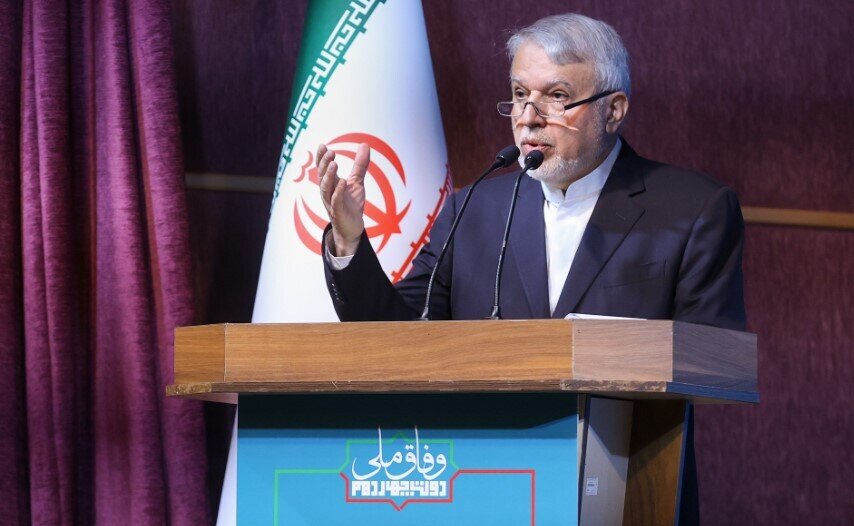Culture a unifying force, tourism a key to soft power: minister

TEHRAN – On Tuesday, the Minister of Cultural Heritage, Tourism, and Handicrafts Seyyed Reza Salehi-Amiri put the spotlight on what he called the “cohesive power of Iranian culture”.
“The rich Iranian culture fosters unity,” Seyyed Reza Salehi-Amiri stated. “Cultural diversity has deep roots in the history of this land, but the key element that defines our civilization is national cohesion and collective unity.”
He made the remarks at an unveiling ceremony attended by President Masoud Pezeshkian, a host of cultural heritage enthusiasts and travel insiders at the National Museum of Iran.
Moreover, the minister highlighted the government’s commitment to prioritizing cultural heritage, tourism, and handicrafts, noting the significance of the president’s presence at the gathering. During the meeting, President Pezeshkian and Salehi-Amiri also unveiled a selection of Achaemenid tablets, recently brought back home from the U.S.
Salehi-Amiri praised Iran’s cultural legacy, stating, “Iran's culture is ancient, resilient, and capable of building civilizations. This recent display of ancient clay tablets at the National Museum is a clear example of the richness of our cultural, historical, and civilizational heritage.”
He further elaborated on the importance of unity, saying, “Unity means rationality over extremism, solidarity over division, and dialogue to solve problems rather than destruction. It is about responding to the people's demands, promoting ethics, and fostering tolerance and patience toward differing opinions.”
Tourism as a key asset for cultural diplomacy
The minister stressed that cultural heritage is central to Iran’s national, religious, and political identity, and tourism plays a vital role in promoting stability and security.
“Tourism is the greatest asset for Iran’s cultural diplomacy,” he said. “Cultural diplomacy fosters relations between nations, shared understanding, and collective peace and stability.”
Elsewhere in his remarks, Salehi-Amiri underscored the importance of leveraging Iran’s cultural and civilizational strengths on the global stage, positioning tourism as a major national priority.
“Cultural heritage is Iran’s soft power. Just as we need hard power for deterrence, we need soft power to showcase our cultural and civilizational capacities to the world.”
He added, “We must recognize that cultural heritage and tourism should become one of the country’s top three priorities. By promoting cultural diplomacy, we can aim for a future where tourism replaces the oil revenues as a primary economic driver.”
Goal of attracting 15 million travelers per annum
Salehi-Amiri underlined a target of attracting 15 million tourists by the end of the Seventh National Development Plan, while he emphasized the importance of investments by the private sector. “The development train won’t reach its destination without the participation of the private sector and the public,” he said, referring to investors as the “engine” of the tourism industry.
He also called for improved infrastructure, proposing an increase in the number of hotels from 1,430 to 1,900 by building 100 four- or five-star hotels each year.
The minister also outlined plans to double employment in the handicrafts sector from 500,000 to 1 million jobs and increase exports from $224 million to $2.4 billion.
Salehi-Amiri concluded by emphasizing the importance of overcoming obstacles through the High Council of Cultural Heritage, Tourism, and Handicrafts, which he believes can remove barriers to growth in these crucial sectors.
Iran’s tourism industry witnessed a 21% upsurge in 2023, signaling a strong recovery in the post-COVID-19, according to data compiled by the World Travel and Tourism Council. According to the WTTC, the increase was part of a broader recovery following the impact of the COVID-19 pandemic, which saw the industry plummet by 45% in 2020.
The Islamic Republic expects to reap a bonanza from its numerous tourist spots such as bazaars, museums, mosques, bridges, bathhouses, madrasas, mausoleums, churches, towers, and mansions, of which 28 are inscribed on the UNESCO World Heritage list.
AM
Leave a Comment